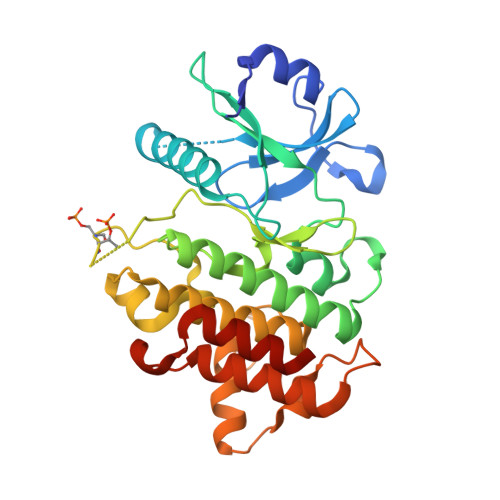Development of Potent and Selective Pyrazolopyrimidine IRAK4 Inhibitors.
Bryan, M.C., Drobnick, J., Gobbi, A., Kolesnikov, A., Chen, Y., Rajapaksa, N., Ndubaku, C., Feng, J., Chang, W., Francis, R., Yu, C., Choo, E.F., DeMent, K., Ran, Y., An, L., Emson, C., Huang, Z., Sujatha-Bhaskar, S., Brightbill, H., DiPasquale, A., Maher, J., Wai, J., McKenzie, B.S., Lupardus, P.J., Zarrin, A.A., Kiefer, J.R.(2019) J Med Chem 62: 6223-6240
- PubMed: 31082230
- DOI: https://doi.org/10.1021/acs.jmedchem.9b00439
- Primary Citation of Related Structures:
6O8U, 6O94, 6O95, 6O9D - PubMed Abstract:
A series of pyrazolopyrimidine inhibitors of IRAK4 were developed from a high-throughput screen (HTS). Modification of an HTS hit led to a series of bicyclic heterocycles with improved potency and kinase selectivity but lacking sufficient solubility to progress in vivo. Structure-based drug design, informed by cocrystal structures with the protein and small-molecule crystal structures, yielded a series of dihydrobenzofurans. This semisaturated bicycle provided superior druglike properties while maintaining excellent potency and selectivity. Improved physicochemical properties allowed for progression into in vivo experiments, where lead molecules exhibited low clearance and showed target-based inhibition of IRAK4 signaling in an inflammation-mediated PK/PD mouse model.
- Genentech, Inc. , One DNA Way , South San Francisco , California 94080 , United States.
Organizational Affiliation:





















